The rumors you may have heard are true: the Ku Klux Klan was indeed active in Covina a century ago.
In his 1964 history,1 Donald Pflueger tells of one well-attended KKK event (p.102). He quotes the Covina Argus of August 8, 1924:
Several hundred people gathered at the city park last Saturday night to listen to a program put on by the Ku Klux Klan. Seats had been provided and the audience was kept interested from the opening band concert until the close of the lecture given by Realm Lecturer Lackey, from the Imperial Palace at Atlanta, Georgia.
Pflueger continues:
Apparently it was an audience of curiosity seekers, because the organization made little progress among Covina’s citizenry. Nonetheless, Covina was one-hundred percent white; Mexicans lived in Irwindale and elsewhere. No one seriously questioned the “White Race Only” sign on the city’s plunge.
Covina was not unusual in this regard, however. Neighboring Azusa,2 Glendora,2 Pomona,3 and thousands of other cities all across the U.S. had organized chapters of the Ku Klux Klan during the same time period.4 This Wikipedia article describes the growth of the group in considerable detail.

Awhile back, I was made aware of these photographs of members of the KKK participating in a May Day parade in Covina in 1922.
Here, the Klan float is in the 100 block of North Citrus, passing the alley...
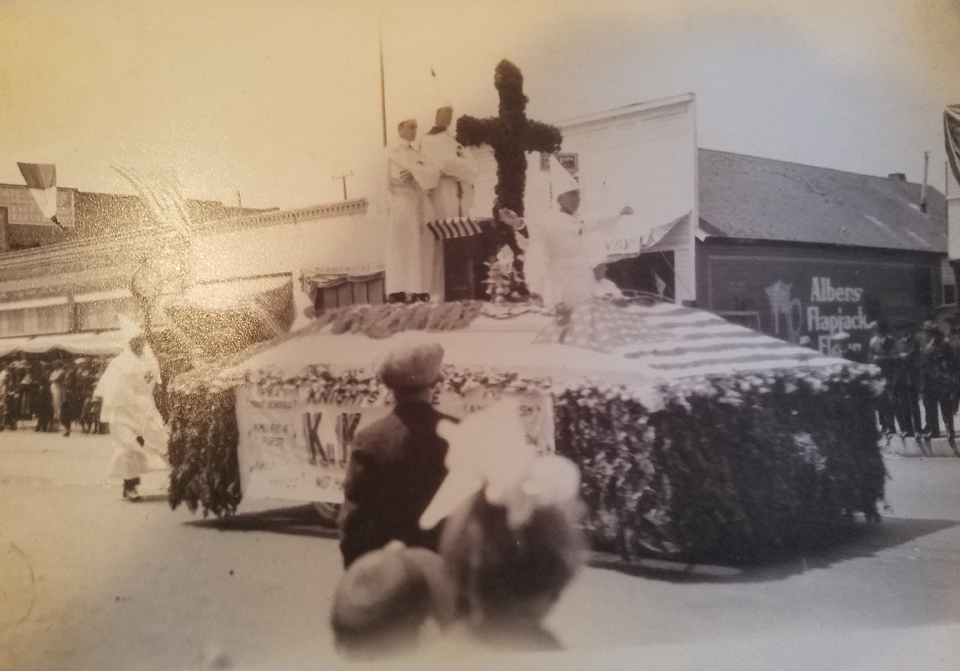
Photo courtesy Covina Valley Historical Society.
...and a few seconds later on Citrus at College.

Photo by C. W. Tucker Studio, Covina.
The Covina Klan pose with their float in front of the old high school:
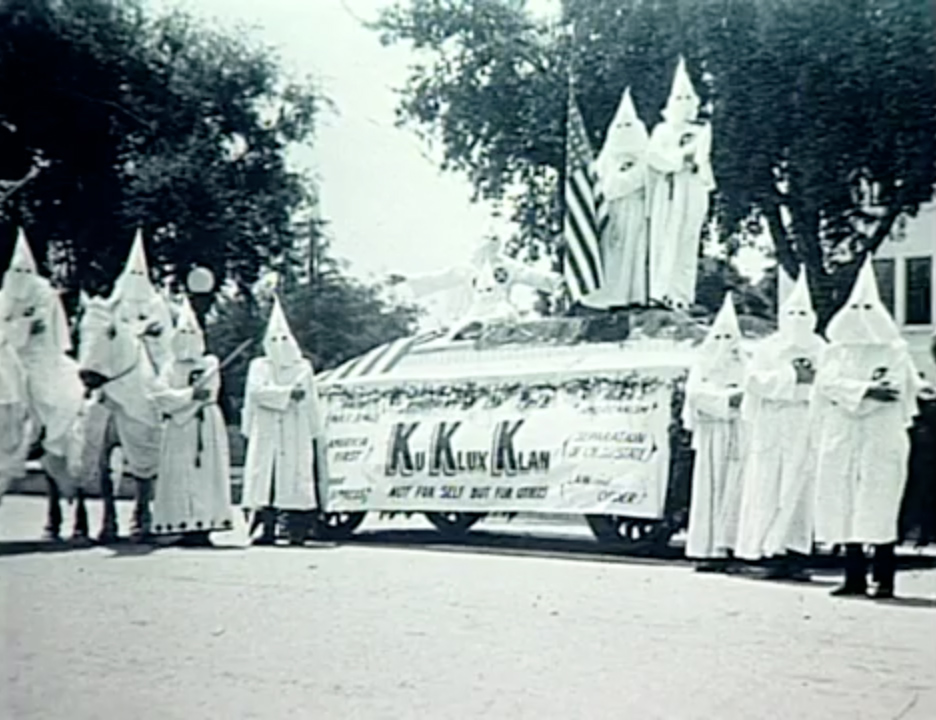
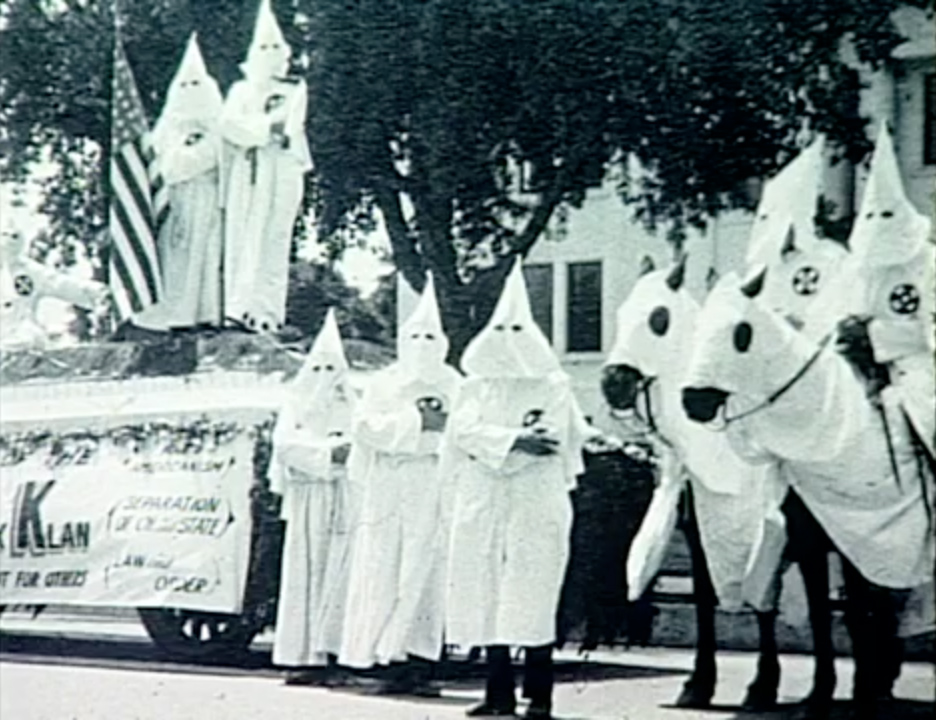
From the DVD 75 Years of Covina, Rotary Club of Covina and the Covina Valley Historical Society.

The KKK organized locally in 1921.5 This is the earliest mention of the "Covina Klan" in the city newspaper:
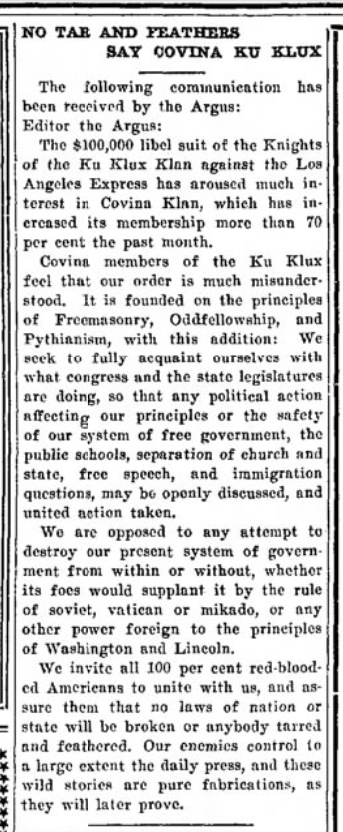
Covina Argus, August 12, 1921.6
The following year, the wife of the owner/editor of the Argus was appointed to a County Grand Jury tasked with investigating the KKK:

Covina Argus, May 5, 1922.7
In July of '22, the Argus reported that "fully fifty" Covinans attended a talk in Azusa on the subject of "The Ku Klux Klan."8 Interest apparently boomed after that. Only 3 months later, 400 locals showed up for a Klan function in the Covina Hills.9
This rapid growth would seem to belie Pflueger's claim that those who attended the aforementioned KKK meeting in Covina Park in 1924 were mere "curiosity seekers."1 Although not necessarily active participants, it's evident many Covinans were at least receptive to the Klan's messaging during the mid-Twenties. ("Several hundred people"1 in a city of only 2,000 residents at the time10 is not an insignificant percentage.)
Still, the last paragraph of the article below–also from 1924–suggests Covina's adherents were less extreme in their views than might be imagined:
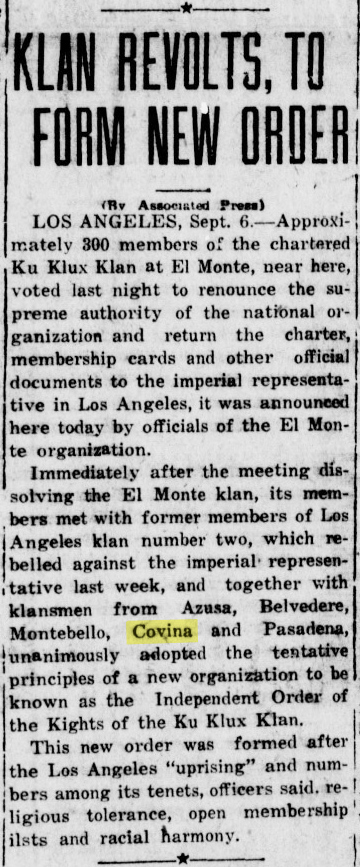
Merced Morning Star, September 7, 1924.11
In my searches, I found only one ad soliciting membership in the Covina Klan, and that also turned out to be the last of only 15 mentions of the organization in the archive:

Covina Argus, April 4, 1930.12
Participation in the Ku Klux Klan dropped off sharply both locally and nationwide after 1930, the many reasons for which are best summarized here.13

References:
1 Pflueger, D. H. 1964. Covina: Sunflowers, Citrus, Subdivisions. Castle Press, Pasadena, California, 372pp.
2 Covina Argus, June 23, 1922, p.1.
3 Pomona Progress-Bulletin, January 21, 1924, p.13.
4 Wikipedia.
5 Covina Argus, February 28, 1930, p.8.
6 Covina Argus, August 12, 1921, p.6.
7 Covina Argus, May 5, 1922, p.5.
8 Covina Argus, July 7, 1922, p.6.
9 Covina Argus-Citizen, October 20, 1932, p.3.
10 United States Census, 1920.
11 Merced Morning Star, September 7, 1924, p.1.*
12 Covina Argus, April 4, 1930, p.6.
13 Wikipedia.
Clippings from Newspapers.com and the *California Digital Newspaper Collection.
No comments:
Post a Comment
To post a comment, you must login to this page with the Google Chrome web browser. That is the only way that works now.